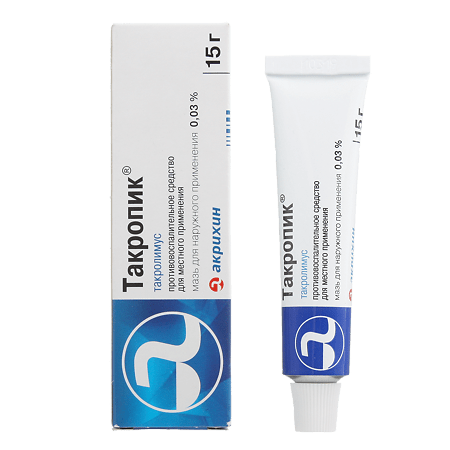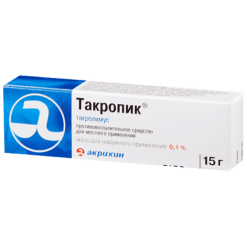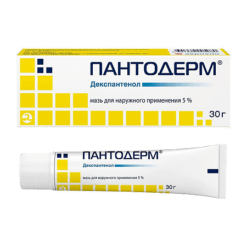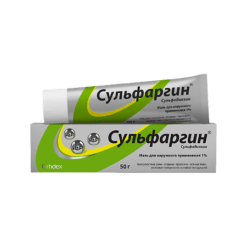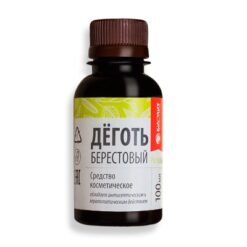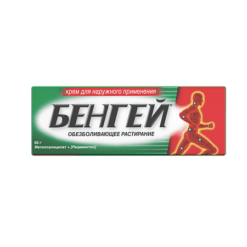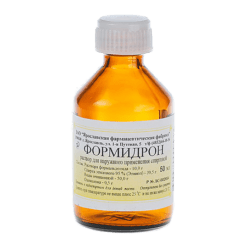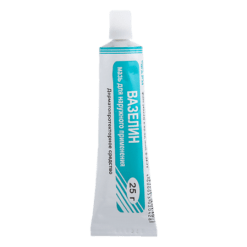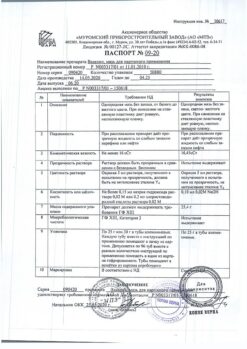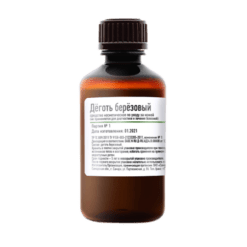No products in the cart.
Tacropic, ointment 0.03 g+0.03 g % 15 g
€13.70 €11.42
Description
Tacrolimus belongs to the group of calcineurin inhibitors. It binds to the specific cytoplasmic protein immunophilin (FKBP12), which is a cytosolic receptor for calcineurin (FK506).
This results in the formation of a complex including tacrolimus, FKBPI2, calcium, calmodulin and calcineurin. which leads to inhibition of the phosphatase activity of calcineurin. This prevents dephosphorylation and translocation of nuclear factor of activated T cells (NFAT), which is essential for the initiation of transcription of genes encoding the production of cytokines key to the T-cell immune response (IL-2 and interferon gamma).
In addition, tacrolimus inhibits transcription of genes encoding production of cytokines such as IL-3, IL-4, IL-5, granulocyte-macrophage colony-stimulating factor (GMSF) and tumor necrosis factor (TNF-α), which are involved in the initial stages of T cell activation.
In addition tacrolimus inhibits release of inflammatory mediators from mast cells, basophils and eosinophils and decreases expression of FcɛRI (high-affinity surface receptor for immunoglobulin E) on Langerhans cells, which leads to decrease of their activity and antigen presenting to T-lymphocytes.
The tacrolimus ointment does not affect collagen synthesis and thus does not cause skin atrophy.
Pharmacokinetics:
Absorption. Absorption of tacrolimus into the systemic bloodstream when used topically is minimal. In most patients with atopic dermatitis (adults and children), both single application and multiple applications of 0.03% and 0.1% tacrolimus ointment had plasma concentrations of < 1.0 ng/mL. Systemic absorption depends on the lesion area and decreases as the clinical manifestations of atopic dermatitis disappear. No cumulation of the drug was noted with long-term use (up to 1 year) in children and adults.
Distribution. Because systemic absorption of tacrolimus ointment is low, the high ability to bind to plasma proteins (over 98.8%) is considered clinically insignificant.
Metabolism. Tacrolimus is not metabolized in the skin. When entering the systemic bloodstream, tacrolimus is largely metabolized in the liver via the CYP3A4 isoenzyme.
Elimation. With multiple topical applications of tacrolimus ointment, the elimination half-life is 75 h in adults and 65 h in children.
Indications
Indications
For systemic use: prevention and treatment of liver and kidney allograft rejection in adult patients. Treatment of allograft rejection resistant to standard immunosuppressive therapy in adult patients.
For external use: treatment of atopic dermatitis (moderate and severe forms) in case of insufficient response of patients to traditional methods of treatment or the presence of contraindications to them.
Pharmacological effect
Pharmacological effect
Tacrolimus belongs to the group of calcineurin inhibitors. It binds to a specific cytoplasmic protein immunophilin (FKBP12), which is a cytosolic receptor for calcineurin (FK506).
As a result, a complex is formed that includes tacrolimus, FKBPI2, calcium, calmodulin and calcineurin. which leads to inhibition of the phosphatase activity of calcineurin. This makes it impossible to dephosphorylate and translocate nuclear factor of activated T cells (NFAT), which is necessary to initiate transcription of genes encoding the production of cytokines key to the T-cell immune response (IL-2 and interferon-gamma).
In addition, tacrolimus inhibits the transcription of genes encoding the production of cytokines such as IL-3, IL-4, IL-5, granulocyte-macrophage colony-stimulating factor (GMCSF) and tumor necrosis factor (TNF-α). which take part in the initial stages of T-lymphocyte activation.
In addition, under the influence of tacrolimus, the release of inflammatory mediators from mast cells, basal cells and eosinophils is inhibited, as well as a decrease in the expression of FcɛRI (high-affinity surface receptor for immunoglobulin E) on Langerhans cells, which leads to a decrease in their activity and antigen presentation to T lymphocytes.
Tacrolimus ointment does not affect collagen synthesis and thus does not cause skin atrophy.
Pharmacokinetics:
Absorption. Absorption of tacrolimus into the systemic circulation when applied topically is minimal. In the majority of patients with atopic dermatitis (adults and children), both with single application and with repeated application of 0.03% and 0.1% tacrolimus ointment, its plasma concentration was <1.0 ng/ml. Systemic absorption depends on the area of the lesion and decreases as the clinical manifestations of atopic dermatitis disappear. Cumulation of the drug with long-term use (up to 1 year) in children and adults was not observed.
Distribution. Due to the fact that the systemic absorption of tacrolimus ointment is low, the high ability to bind plasma proteins (more than 98.8%) is considered to be clinically insignificant.
Metabolism. Tacrolimus is not metabolized in the skin. Once in the systemic circulation, tacrolimus is largely metabolized in the liver via the CYP3A4 isoenzyme.
Excretion. With repeated topical application of tacrolimus ointment, the half-life is 75 hours in adults and 65 hours in children.
Special instructions
Special instructions
Tacropic® should not be used in patients with congenital or acquired immunodeficiencies or in patients taking immunosuppressive drugs.
When using Tacropic® ointment, it is necessary to avoid skin exposure to sunlight, visiting a solarium, or ultraviolet B or A therapy in combination with psoralen (PUVA therapy).
Tacropic® should not be used to treat lesions that are considered potentially malignant or premalignant.
For 2 hours, emollients should not be used on the skin areas to which Tacropic® was applied.
The effectiveness and safety of Tacropic® in the treatment of infected atopic dermatitis has not been evaluated. If there are signs of infection, appropriate therapy must be administered before prescribing Tacropic®. The use of Tacropic® may be associated with an increased risk of developing herpes infection. If there are signs of herpetic infection, the benefit-risk ratio of using Tacropic® should be individually assessed.
If lymphadenopathy is present, it is necessary to examine the patient before starting therapy and monitor him during the period of use of the drug. If there is no obvious cause of lymphadenopathy or if symptoms of acute infectious mononucleosis are present, use of Tacropic® should be discontinued.
It is necessary to avoid contact of the drug with the eyes and mucous membranes (in case of accidental contact with the ointment, it must be thoroughly removed and/or rinsed with water).
It is not recommended to apply Tacropic® ointment under occlusive dressings and to wear tight, airtight clothing.
As with any other topical medication, patients should wash their hands after applying the ointment, unless the ointment is applied to the arm area for medicinal purposes.
It has been shown that in children aged 2 to 11 years, treatment with tacrolimus ointment 0.03% against the background of vaccination with a conjugate vaccine against Neisseria meningitidis serotype C does not affect the primary response to vaccination, the induction of a T-cell immune response and the formation of immune memory.
Impact on the ability to drive vehicles and operate machinery
Studies on the effect of the drug on the ability to drive a car and on the speed of reaction when working with complex equipment that requires increased attention have not been conducted. Tacropic® is used externally and there is no reason to believe that it may affect the ability to drive a car or operate machinery.
Active ingredient
Active ingredient
Tacrolimus
Composition
Composition
Per 100 g:
tacrolimus 30 mg.
Excipients:
macrogol 400 – 10 g,
liquid paraffin – 20 g,
white soft petroleum jelly – 5 g,
emulsion wax – 10 g,
disodium edetate – 0.05 g,
preservative Euxyl PE 9010 (phenoxyethanol 90%, ethylhexylglycerol 10%) in terms of phenoxyethanol – 0.45 mg,
purified water – up to 100 g.
Contraindications
Contraindications
– Serious disorders of the epidermal barrier, in particular Netherton’s syndrome, lamellar ichthyosis, cutaneous manifestations of graft-versus-host disease, as well as generalized erythroderma (due to the risk of increased systemic absorption of tacrolimus);
– children under 2 years of age (for 0.03% ointment);
– children and adolescents up to 16 years of age (for 0.1% ointment);
– pregnancy;
– period of breastfeeding;
– hypersensitivity to tacrolimus, auxiliary components of the drug, macrolides.
With caution
Tacrolimus is largely metabolized in the liver, and although its concentration in the blood when applied topically is very low, the ointment should be used with caution in patients with decompensated liver failure.
Caution must be exercised when using Tacropic® ointment in patients with extensive skin lesions, long courses, especially in children.
Side Effects
Side Effects
The most common adverse reactions are symptoms of skin irritation (burning and itching sensation, redness, pain, paresthesia and rash) at the site of application. As a rule, they are moderate and disappear within the first week after the start of treatment.
Alcohol intolerance (facial redness or symptoms of skin irritation after drinking alcohol) is common.
Patients using Tacropic® have an increased risk of developing folliculitis, acne and herpetic infections.
By frequency of occurrence, adverse reactions are distributed as follows: very often (≥1/10); often (≥1/100, <1/10); uncommon (≥1/1000, <1/100); rare (≥1/10,000, <1/1000), very rare (<1/10,000), frequency unknown (insufficient data to estimate the frequency of development). Within each group, adverse reactions are presented in descending order of importance.
Infectious diseases: often – local skin infections, regardless of etiology (in particular, but not limited to those listed, Kaposi’s herpetic eczema, folliculitis, infection caused by the Herpes simplex virus, other infections caused by viruses of the Herpes viridae family).
Metabolism and nutrition: often – alcohol intolerance (facial flushing or symptoms of skin irritation after drinking alcohol).
From the nervous system: often – paresthesia, hyperesthesia.
From the skin and subcutaneous tissues: often – folliculitis, itching; infrequently – acne.
General disorders and disorders at the injection site: very often – burning and itching in the area of application; often – a feeling of warmth, redness, pain, irritation, rash in the area of application; frequency unknown – swelling in the area of application.
During the entire period of observation of the drug, isolated cases of rosacea and malignancy (skin and other types of lymphomas, skin cancer) were recorded.
Interaction
Interaction
Tacrolimus is not metabolized in the skin, eliminating the risk of drug interactions in the skin that could affect its metabolism. Because systemic absorption of tacrolimus when used in ointment form is minimal; interaction with inhibitors of the CYP3A4 isoenzyme (including erythromycin, itraconazole, ketoconazole, diltiazem) when used simultaneously with Tacropic® is unlikely, but cannot be completely excluded in patients with large areas of lesions and/or erythroderma.
The effect of Tacropic® on the effectiveness of vaccination has not been studied. However, due to the potential risk of reduced effectiveness, vaccination must be carried out before starting use of the ointment or 14 days after the last use of Tacropic®. If a live attenuated vaccine is used, this period should be extended to 28 days, otherwise alternative vaccines should be considered.
The simultaneous use of tacrolimus with a conjugate vaccine against Neisseria meningitidis serotype C in children from 2 to 11 years of age does not affect the primary response to vaccination, the formation of immune memory, as well as the humoral and cellular immune response.
The possibility of combined use of the drug Tacropic® with other external drugs, systemic corticosteroids and immunosuppressants has not been studied.
Overdose
Overdose
With topical use, no cases of overdose were observed. If ingested, it is necessary to take generally accepted measures, which include monitoring vital body functions and monitoring the general condition. Inducing vomiting or gastric lavage is not recommended.
Storage conditions
Storage conditions
At a temperature not higher than 25°C.
Keep out of the reach of children.
Shelf life
Shelf life
2 years. Do not use the drug after the expiration date indicated on the package.
Manufacturer
Manufacturer
Akrikhin JSC, Russia
Additional information
| Shelf life | 2 years. Do not use the drug after the expiration date stated on the package. |
|---|---|
| Conditions of storage | At a temperature not exceeding 25 ° C. Keep out of reach of children. |
| Manufacturer | Akrihin HFC JSC, Russia |
| Medication form | topical ointment |
| Brand | Akrihin HFC JSC |
Other forms…
Related products
Buy Tacropic, ointment 0.03 g+0.03 g % 15 g with delivery to USA, UK, Europe and over 120 other countries.

